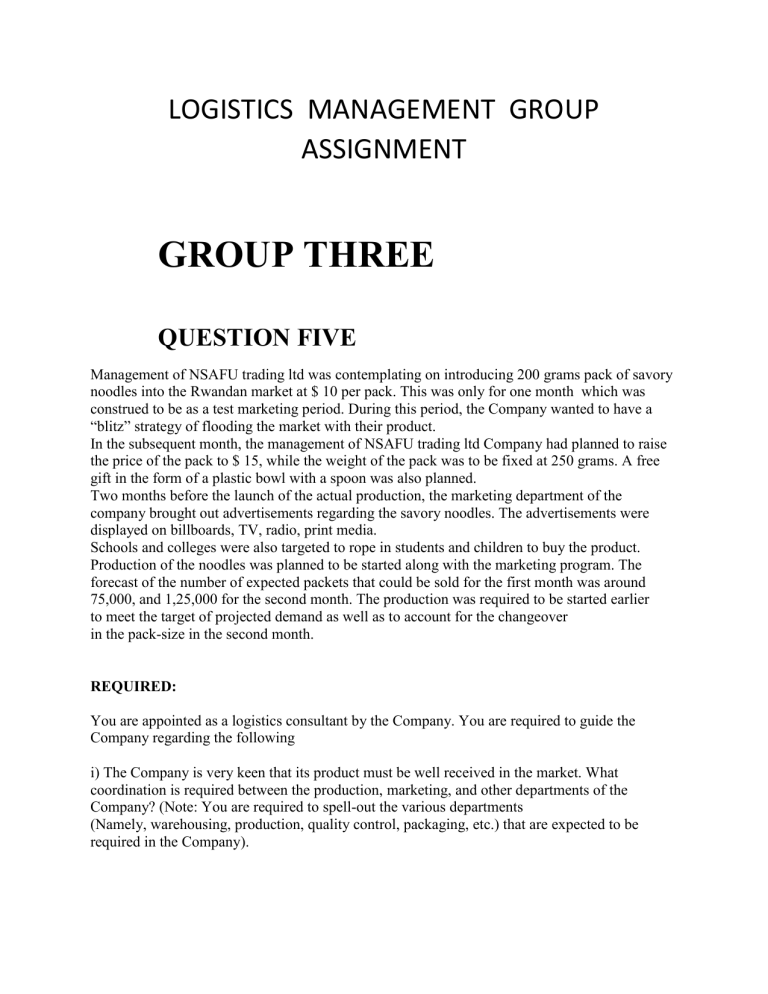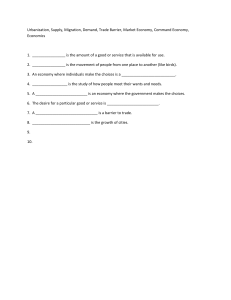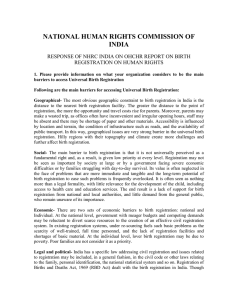
LOGISTICS MANAGEMENT GROUP ASSIGNMENT GROUP THREE QUESTION FIVE Management of NSAFU trading ltd was contemplating on introducing 200 grams pack of savory noodles into the Rwandan market at $ 10 per pack. This was only for one month which was construed to be as a test marketing period. During this period, the Company wanted to have a “blitz” strategy of flooding the market with their product. In the subsequent month, the management of NSAFU trading ltd Company had planned to raise the price of the pack to $ 15, while the weight of the pack was to be fixed at 250 grams. A free gift in the form of a plastic bowl with a spoon was also planned. Two months before the launch of the actual production, the marketing department of the company brought out advertisements regarding the savory noodles. The advertisements were displayed on billboards, TV, radio, print media. Schools and colleges were also targeted to rope in students and children to buy the product. Production of the noodles was planned to be started along with the marketing program. The forecast of the number of expected packets that could be sold for the first month was around 75,000, and 1,25,000 for the second month. The production was required to be started earlier to meet the target of projected demand as well as to account for the changeover in the pack-size in the second month. REQUIRED: You are appointed as a logistics consultant by the Company. You are required to guide the Company regarding the following i) The Company is very keen that its product must be well received in the market. What coordination is required between the production, marketing, and other departments of the Company? (Note: You are required to spell-out the various departments (Namely, warehousing, production, quality control, packaging, etc.) that are expected to be required in the Company). Answer: The link between marketing and production is a dual one. On one hand, production capabilities determine the number and type of products which can be marketed, and, on the other hand, a more accurate prediction of sales forecast for each product and product line is essential for efficient production operations ii)Discuss the role of the Logistics Department in the introductory phase. Answer: The roles of logistics feature transportation/delivery, storage, packaging, cargo handling, distribution processing, and information processing, and many systems have been put in place to deliver products from the production location or factory to the consumer quickly and on time. iii) As a logistics consultant, you are required to foresee the type of difficulties which the company could face during the changeover. Give suggestions to the Company to tide over these difficulties. Answer: What do you mean by changeover? Changeover is a conversion or complete change from one thing, condition, or system to another, as in equipment, personnel, methods of production, etc.: a changeover to automated equipment. Why Change is Always Necessary The management always wants to implement change because they have the belief that the change in question will bring significant impact to the organization as a whole. Perhaps the main objective for introducing organizational change and its implementation is that the change will improve and maintain the production environment of the organization on a daily basis. While change is necessary, usually for the good of the organization and its staff, it will always be subject to some form of resistance. Change is usually traumatic, completely unknown and saying goodbye to the former organizational process can be somewhat difficult for embrace by the employees in the organization. Resistance to change is never a barrier to change management. In fact, it is important to understand that the barriers that make it difficult to implement change are usually the reasons behind the resistance to change. That change is a necessary part of life means businesses must embrace it without excuse. The top management always have the idea that a certain change need to be implemented to enable the organization to accomplish set strategic goals. But no matter how necessary the change is, it will be difficult for an organization to implement the planned strategic change successfully if barriers to change do exists. In this case, it is necessary to break all the barriers for successful planning and implementation of the change. What are the Barriers to Change Management? Conducting a baseline assessment is an ideal process that will help any organization to identify potential and actual barriers to change. Barriers will always crate a gap in recommended and current practices, eventually having a negative effect on the daily production process of the organization. To prevent this from happening, it would be appropriate to pinpoint on the major barriers to change as well as knowing how stay clear of them. Once you know how to solve these barriers, it should be easy to plan and implement change. The most common barriers to change implementation are often the following. 1. Lack of Employee Involvement This is perhaps the most common barrier to change management. Employees always have the fear of change, and unless they are involved in the change process, it is highly likely that even the most loyal member of your employees will resist the change. The biggest mistake some organizations make is failure to involve employees in the change process. This spikes fear of the unknown, lack of desire to embrace a new culture and eventually a complete barrier to the change. Your efforts to introduce change can only succeed when you get employees involved in the change process as much as possible. Getting the employees involved means listening to their opinion, accounting for their output and assuring them that the change is for the good of all in the organization including them. Providing relevant, sufficient resources to drive them towards change will be a necessary thing to do, so that they are comfortable and ready to adjust to the new development within the organization. 2. Lack of Effective Communication Strategy Some organizations have no effective communication strategy. In fact, some top leaders always assume that once they announce the change, people will adjust and be ready to get started with the new development. This is the silliest way to introduce change, hence forceful resistance to the change. CEOs should stop making announcement and introduce strategies. Employees do not need to know about the change only. They need to know how the change will affect them as well as how they will adapt to the change. 3. A Bad Culture Shift Planning Sometimes the planning team totally has no idea that the change will affect people. Of course, the team at this state will only concentrate on planning administrative structure, work area responsibilities, job responsibilities as well as work reporting structure. More often than not, the planning team always fails to make decisions based on feelings and intuitions. This really overlooks how people feel, reason and work hence barrier to change. The only way to break this barrier is for the planning team to understand that the organization must not overlook the feelings of the employees. The organization has to do whatever it takes to prevent deep resentments, which usually occur due to disrespect of taboos and traditions at the workplace. Therefore, when focusing on critical thinking and objective analysis, it is important to understand that taking the feelings of the employees into account is quite a great way to overcome the barrier that usually hinder 4. Unknown Current State Change is always difficult for organizations that lack the idea of their current state. Trying to introduce and implement change without conducting an assessment and understanding the current blueprint of the organization is a common habit by many entities. Such entities actually do not realize that the failure to analyze the current organization’s blueprint will cause a barrier to the change they hope to introduce and implement. The only way to get around this is to analyze and fully understand the current blueprint of the organization before attempting to introduce or suggest any change. Once you go through the blueprint and understand it clearly, it becomes easier to plan and transition to a future state. 5. Organization Complexity There comes a time when organizations begin to develop complex processes, making the process of planning and implementing change a bit more complex. The complexities include complex processes, products and systems, all which contribute to change barriers because they are often quite difficult for the members of the organization to understand. It is necessary to break this barrier by introducing a keen and skillful approach to tackle organizational fast growth as well as complexity. An organization can break this barrier by employing diligent, quality and highly effective project and change management approach. It is wise, however, never to tackle a change that is going to be too complex for your organization. You also do not want to introduce and try to implement complex changes if your organization still lacks the maturity to handle any complex change. Conclusion Once you understand and manage these barriers to change management, it will be easy to implement the change. In the end, everyone in the organization will be comfortable to embrace the new change. QUESTION SIX Rwanda is planning to introduce rail transportation, analyze Social, political, and economic impacts that the introduction of this rail line will have on Rwanda.



